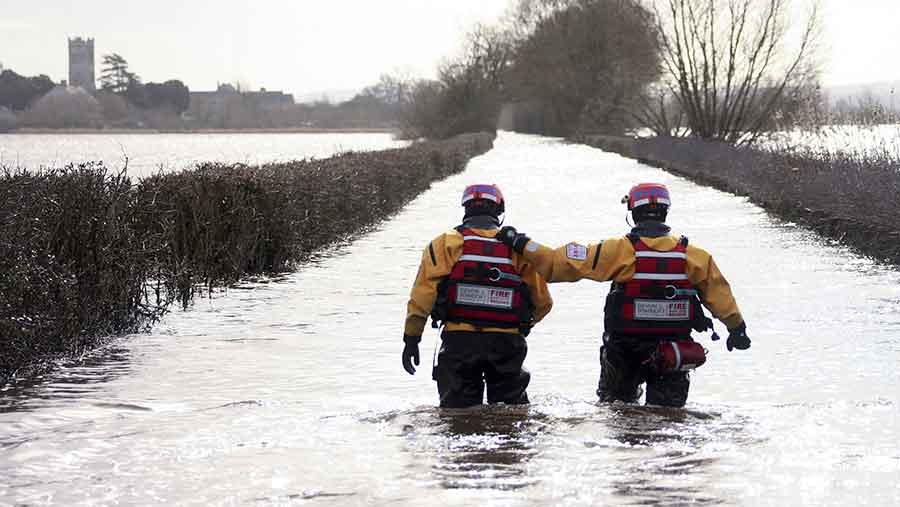Farmers fear repeat of Somerset floods
Somerset farmers have expressed grave concern that they could be ordered to flood their farmland for weeks on end to protect towns and villages further downstream.
The suggestion that farmland should be used to store millions of gallons of water was discussed at a public meeting with Environmental Agency officials at Langport on the Somerset Levels.
It comes as local communities prepare for their third winter since the worst floods in living memory forced the evacuation of farming families and their livestock in January 2014.

© Rex
See: Photos – Somerset farmer battles against rising flood water
One of those farmers was James Winslade, who farms at West Yeo. He said: “We can help ease flooding, but we can’t store water for any length of time.
“As soon as the levels are flooded, you need to start looking to get rid of the water because they can quickly overflow and flood villages anyway.”
A better solution would be to continue with the dredging programme implemented after the 2013-14 floods, said Mr Winslade.
Concerned
“We are concerned that the Environment Agency is up to its old tricks and wants to stop maintaining the watercourses,” he said.
“It is well known that the Somerset Levels flood – they always have done and we accept that, but it is usually only up to a depth of a foot or two.
Mr Winslade said he accepted that it was better to flood farmland rather than homes, but farmers would have to be properly compensated for any crops that were lost.
Strict guidelines would have to ensure water was stored for as short a period as possible, he added.
“We also have concerns that water storage would be a blanket policy and that in certain areas – especially the Somerset Levels – water storage is wholly inappropriate.”
Mr Winslade, who is a founder member of the Flooding on the Levels Action Group (FLAG), said the group had called for the introduction of a precept to fund local flood relief schemes.
It was unfortunate that the idea had been pushed down the agenda by Brexit, he added.
Water storage
An Environment Agency spokesman said the agency was not considering water storage on farms. The agency had always said dredging was part of the solution to managing flood risk, he added.

© David Parker / Associated Newspapers/REX Shutterstock
“Dredging and clearing channels are important parts of the Environment Agency’s maintenance regime. Over the past two years we have spent £21m on dredging around England,” said the spokesman.
After the 2013-14 floods, the Environment Agency had completed 8km of dredging on the rivers Parrett and Tone during summer 2014.
“We have also recently completed a further 750m dredge on the River Parrett, on behalf of the Somerset Rivers Authority,” said the agency spokesman.
“Over the past two years we have also dredged in excess of 40km of main river that feed the pumping stations used to evacuate flood flows during a flood event.”
Regarding the impact of Brexit on its work, the agency spokesman said there would be no immediate change to what the agency did and how it did it.
“Throughout Brexit, it will be the Government’s role to look at environmental legislation and we will perform an advisory role,” he said.
Meanwhile, an open consultation exhibition on plans for a tidal barrier scheme on the River Parrett is due to be held at Bridgwater Arts Centre on Thursday (15 September).
The Environment Agency and Sedgemoor District Council are working in partnership to deliver the scheme by 2024, subject to funding and approvals.
Consultants CH2MHill have been appointed to explore various technical options.
Seven potential locations for the proposed tidal barrier have now been reduced to a shortlist of five, including downstream flood defences.
Information boards at the exhibition will present a shortlist of options, listing the advantages and disadvantages for each location.
The project is supported by the Environment Agency, Sedgemoor District Council and the Somerset Rivers Authority, with funding from the Heart of the South West Local Enterprise Partnership.
